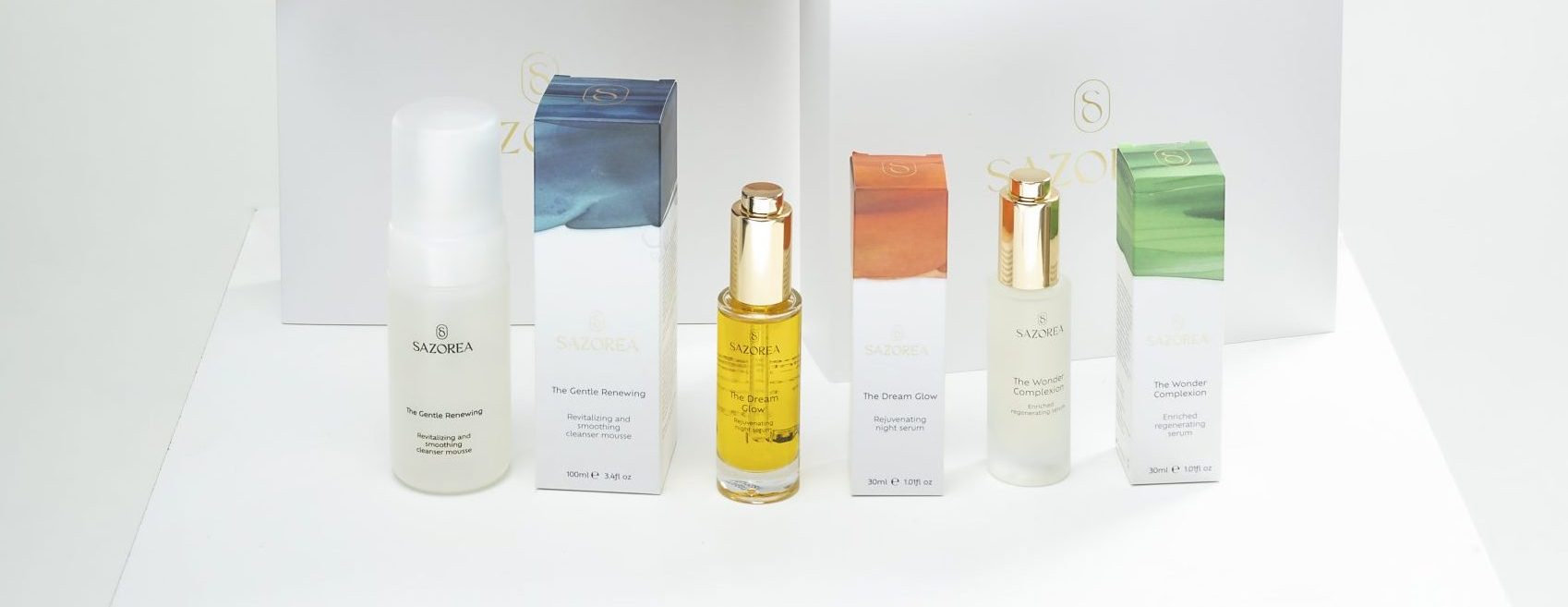
The 3 questions I get asked the most about Sazorea — and the answers I love giving
A soulful FAQ, from my skin to yours. If there’s one thing that warms my heart since Sazorea was born,

Whether you want to start a skincare routine or keep it simple and basic, this basic guide is for you.
I recommend an essential skincare routine consisting of just four steps, each designed to address the main needs of any skin type—the minimum your skin needs to stay healthy and protected day and night:
Follow my guide to select an essential skincare routine based on what works best for you and your specific skin concerns, step by step.
Cleansing is the first essential step in any skincare routine. Cleansers remove dirt, excess oil, and makeup from the skin. When your skin is clean, it allows the products that follow to work even better.
For effective skin cleansing, you should clean your skin in the morning and at night.
Double cleansing has become quite popular recently, where you use an oil-based cleanser followed by a foam or gel cleanser. I recommend it for days when you wear makeup.
Completely clean skin? Contrary to popular belief, you don’t need to feel that tight sensation for your skin to be clean. That feeling is just the soap removing all the natural oils from the skin and can cause irritation and inflammation.
Read this article on an effective cleansing routine.
If you’re looking to add a product to your routine that offers a higher and more powerful dose of active ingredients, the next big step is to treat your skin with a facial serum.
Facial serums, in addition to hydrating the skin, offer a high concentration of active ingredients and are designed to nourish, protect, and address specific concerns.
When it comes to choosing a serum, it’s important to select one that offers a higher and more powerful dose of active ingredients. In general, facial serums fall into the following categories:
Moisturizers improve skin hydration and increase skin’s water content by providing water directly to the skin and increasing occlusion to reduce transepidermal water loss. They also provide a soothing protective film and protect the skin from friction. Moisturizing is crucial to keep your skin healthy and protected day and night.
Finding the right moisturizer for your skin type is an extremely important step in skincare. More specifically, finding the right moisturizer is crucial: it needs to hydrate and restore the skin effectively without leaving it feeling greasy or heavy.
Some moisturizers already contain SPF. If yours does, skip step 4. If not, you should apply sunscreen on top before heading out.
Using SPF is important to keep your skin protected from sun damage, which is the number one cause of wrinkles, skin cancer, dark spots, and other common skin concerns. The more sun protection you use and the earlier you start, the better.
Make sure to choose a sunscreen according to your skin type, climate, and intensity of sun exposure, and look for one with SPF.
At night, as the last step in your nighttime skincare routine, you should choose a moisturizer specifically for nighttime care.
A night cream should provide more than just hydration. Moisturizers (cream, lotion, gel, or liquid texture) loaded with antioxidants and skin-repairing ingredients improve skin function and keep it feeling smooth, soft, and looking younger.
If your morning moisturizer doesn’t contain SPF, don’t forget to apply sunscreen before leaving the house.
We can’t stress enough how important this step is because SPF is the most important treatment for your skin, with huge benefits, and it’s not just for the summer months. The more sun protection you use and the earlier, the better your skin will look and stay healthy for longer. The sun’s UVA and UVB rays result in aging, fine lines, wrinkles, dark spots, and of course, skin cancer, so using daily protection is crucial.
Make sure to look for a sunscreen with SPF 30 or higher, with a 5-star UVA rating. Choose a sunscreen according to your skin type, climate, and intensity of sun exposure.
The protection factor of the sunscreen is closely linked to the formation of a protective film/layer on the skin. Sunscreen is not absorbed, meaning it should be applied last so that none of the other products that follow can interfere with the formation of this protective film and compromise protection.
Your skin type determines which product textures are best suited for you. Check out this article and find out your skin type.

A soulful FAQ, from my skin to yours. If there’s one thing that warms my heart since Sazorea was born,

In the heart of Paris, on a night dedicated to the best of European natural cosmetics, the Azores took the

Today I begin this new chapter of our Notebook with a very special share: the origin of the name Sazorea